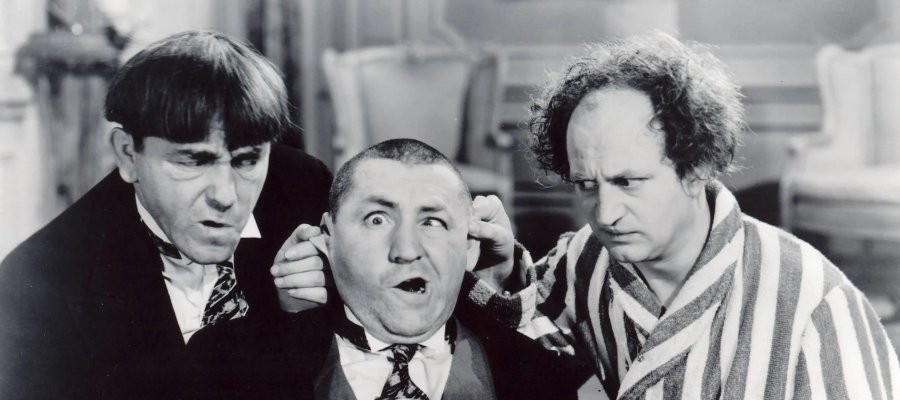
The Time Machine
1949 - United KingdomOne of the earliest examples of sci-fi drama to be screened by BBC television, this one-hour adaptation of H.G. Wells' masterpiece of Science Fiction literature was originally broadcast as far back as 1949. Dramatised by Robert Barr who also had to act as script editor, producer and director, the programme was transmitted live from Studio A at Alexander Palace from 8.30pm to 9.30pm on 25 January.
The story opens in the living room of a late Victorian House where a young man (Russell Napier) is entertaining some dinner guests when talk gets around to time travel. The young man informs his friends that he has invented a machine capable of crossing the boundaries of time, and when they become sceptical he takes them through to his laboratory to see the machine he has built. His friends leave unconvinced and on their departure the young man, left alone in the house, activates the device. The room lightens and darkens and the hands of a clock on the wall move forward so quickly that they eventually become nothing but a blur. Eventually the man stops the machine and finds himself in front of a strange monument. The dials on the Time Machine indicate that the year is 802,701 AD.

After a number of misadventures in which the time traveller encounters a female by the name of Weena (Mary Donn), her people (called the Eloi) and the Morlocks, he finally sets off again in the machine, travelling even further forward in time until he witnesses an eclipse by another planet, blocking out the sun and signalling the end of the world. The traveller puts his machine into reverse and returns to his laboratory, not sure if what he witnessed was real or a dream. As he fills his pipe he puts his hand in his pocket for a match and pulls out a flower given to him by the girl. He says softly, "Weena..." and the picture fades.
Barr's adaptation was more faithful to the original novel (written in 1895) than George Pal's 1960 movie featuring Rod Taylor in the lead role. Unlike Pal, though, Barr would was without latter day techniques in special effects and it was down to designer Barry Learoyd to make the most of the limited resources that were available and use them to their absolute limits. The traveller's thoughts, which were required in several scenes, were actually recorded onto a 78rpm disc and one of the first uses of 'back projection' was brought into effect.
It must have been a daunting undertaking for Barr, but as he most perceptively said in an earlier interview, "faint heart never made good television." Rehearsals took place prior to transmission at 31 Beaumont Mews from January 11th to 22nd, and when the live broadcast finally went out it was received by the viewing public as both 'too weird and impossible to enjoy it' or 'a marvellous technological achievement in escapism.' Reaction was good enough for a revised production to be transmitted at 9.15pm on Monday 21st February 1949. Unfortunately, apart from a few photographs, the original script and an article in the 'Radio Times,' (TV shows were not preserved in any great number until the 1950's), nothing else remains of this historic adaptation of Wells' novel.
Seen this show? How do you rate it?
Seen this show? How do you rate it?
Published on February 7th, 2019. Written by Noel Onely (2000) for Television Heaven.










